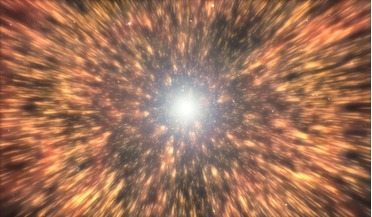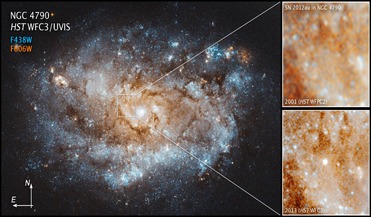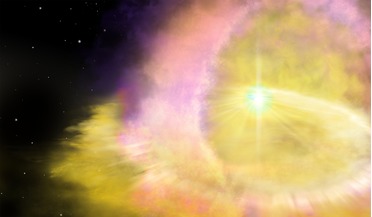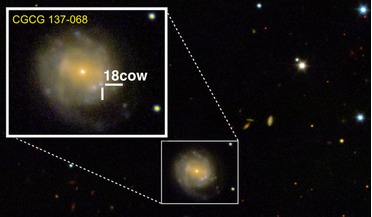 14 November 2016
Mysterious Quark Nova lights up an exploding star for a second time
14 November 2016
Mysterious Quark Nova lights up an exploding star for a second time
... was detected last year, suggest that a Quark-Nova (QN) was responsible for the supernova peaking in brightness a few days later. Supernova explosions occur when a star of a certain mass explodes with such force that they radiate more...
 12 September 2018
Birth of new star from a supernova seen for first time
12 September 2018
Birth of new star from a supernova seen for first time
... at Purdue University and lead author of a paper recently published in the Astrophysical Journal Letters. "We know that supernova explosions produce these types of rapidly rotating neutron stars, but we never saw direct evidence of it at this unique...
 15 April 2020
Scientists discover most brightest and energetic supernova yet
15 April 2020
Scientists discover most brightest and energetic supernova yet
... than usual. By examining the light spectrum, the team were able to show that the explosion was powered by a collision between the supernova and a massive shell of gas, shed by the star in the years before it exploded. "While...
 11 January 2019
Birth of a black hole possibly captured for first time
11 January 2019
Birth of a black hole possibly captured for first time
... peak luminosity in only a few days compared to the usual two weeks associated with standard stellar explosions. Although most of a supernova’s energy is blown out from its core in the form of neutrinos, they also bathe their surroundings...
 12 July 2016
Did two ancient supernovas cause cell mutation and climate change on Earth?
12 July 2016
Did two ancient supernovas cause cell mutation and climate change on Earth?
... from the University of Kansas studying the effects of such an explosion, think perhaps so. Using computer modelling to ascertain the affects of two stars that went supernova approximately 1.7 to 3.2 million and 6.5 to 8.7 million years ago, Adrian...
 02 May 2018
Astronomers spot fastest stars in the galaxy with Gaia
02 May 2018
Astronomers spot fastest stars in the galaxy with Gaia
... leftover stellar remnants. White dwarfs are also behind one of the most common types of supernova explosions in the local Universe - Type Ia supernovae (SNe Ia). SNe Ia occur when mass from one star is transferred onto a white dwarf companion...